

Neza: Inside one of the biggest slums in Mexico

Neza’s History An Account of Urban Development

Neza, a sprawling hamlet representative of informal urbanism, is located in the vast metropolitan area of Mexico City . Its inception dates back to the years following World War II when Mexico City had a massive influx of migrants that exacerbated the city’s housing crisis. Neza, which had been underwater beneath Lake Texcoco, surfaced as an unauthorized colony in retaliation. Neza’s trajectory quickly devolved into a story of marginalization and neglect, despite early hopes for improvement. Neza was initially intended to be a government-led response to the housing crisis, but as the city rapidly urbanized, it attracted people on the margins. However, within its borders, the growth of informal settlements was made possible by the lack of proper infrastructure investment and official oversight. The socioeconomic complexity that faces contemporary Mexico is highlighted by the way that Neza evolved into one of the country’s biggest slums as a result of this shift. Neza is a vast area of impoverished but resilient land now, with bustling streets teeming with life and improvised shelters strewn all over the place. Even with its difficulties, Neza is home to a thriving neighborhood where people have come together to overcome hardships. Neza’s inhabitants, however, face difficult everyday realities due to limited access to necessities including sanitary facilities , healthcare, and education.

Reforms and Efforts for Change: A Slow and Uneven Progress
Neza has seen a ray of light in recent years despite the ongoing problems that plague its urban landscape. To tackle the persistent problems of insufficient education, uneven healthcare access, and inadequate infrastructure, the government has adopted proactive measures. Despite their noble intentions, these endeavors have faced numerous challenges along the route to success.
The path to sustainable progress is still difficult and slow, even with advancements being made in some areas, such as the provision of basic services and the modernization of vital infrastructure.
For those eagerly anticipating tangible improvements, the excruciatingly slow pace of reform execution has been a devastating blow. Insufficient funding, rampant corruption, and labyrinthine bureaucratic processes have conspired to prolong this frustrating delay. Urban regeneration is already a difficult endeavor, made more difficult by the intricacies involved in meeting the different requirements of Neza’s population.

Moving Architectural Triumphs Neza’s Community Ingenuity and Resilience
Neza’s formative years were defined by adversity and creativity. The inhabitants struggled with the improvised infrastructure, depending on water trucks and homemade electricity connections to get by daily. Despite all of these difficulties, though, a feeling of neighborhood unity developed as neighbors banded together to help one another and forge a common identity. Neza’s population growth necessitated the expansion of infrastructure and necessary services. The lack of legal connections to sewage and electricity services presented major challenges, but the people of Neza were not going to let that stop them. They progressively gained access to essential services and raised their standard of living by demanding access to basic utilities through grassroots organizing and advocacy campaigns. They progressively gained access to essential services and raised their standard of living by demanding access to basic utilities through grassroots organizing and advocacy campaigns. Despite the challenges they encountered, the Neza people showed incredible fortitude and inventiveness. Taking issues into their own hands, they changed their environment by sheer willpower and group effort, instead of waiting for outside help. Every stage of Neza’s development, from the installation of pirate electrical cabling to the tedious building of cinderblock dwellings, was a monument to the people’s unwavering determination.

“Emerging from Shadows the Resilience and Hope of Neza”
Stories of tenacity and victory sprout from Neza’s alleyways as twilight falls and casts a veil of shadows over its streets. The resilient spirit of its residents emerges here, among the maze-like urban squalor, serving as a monument to the ability of people to triumph over hardship.
In the middle of the difficulties, hope breaks through the shadows. That hope is the result of the people of Neza’s steadfast perseverance and their ceaseless efforts to address the urgent problems facing the community. Their experiences encourage us to picture a world in which everyone has equal access to opportunities and can prosper. Neza is a sobering reminder of the structural inequities ingrained in the urban structure, nevertheless. But by addressing these injustices head-on and encouraging cooperation, we may go one step closer to a future in which every community thrives. As every day comes to a close, may it signal not just the end of the dark but also the beginning of a better future for Neza and the surrounding territories, filling us with a deep feeling of hope and resolve to bring about constructive change.
References:
Fineman, M. (1996, December 31). Slum serves as model for changing Mexico. The Los Angeles Times.

https://www.latimes.com/archives/la-xpm-1996-12-31-mn-14140-story.html
Waldrep, M. (2015, March 26). Scenes from Neza: Mexico’s self-made city. National Geographic Society
Newsroom. https://blog.nationalgeographic.org/2015/03/26/scenes-from-neza-mexicos-self-made-city/
Community and culture flourish in Mexico’s largest slum. (2016, July 25). BORGEN.
https://www.borgenmagazine.com/mexicos-largest-slum/
Miller, J. (2016, November 14). Where they steal children. Medium.
https://medium.com/@millejoh/the-biggest-slum-in-the-world-68ce8a2ad394
Wulfhorst, E. (2016, October 18). From slum to success story: This is Ciudad Neza. World Economic Forum.
https://www.weforum.org/agenda/2016/10/from-slum-to-success-story-this-is-ciudad-neza/
You, V. W. A. [@VolpeWhereAreYou]. (2021, June 6). Solo in Guadalajara Mexico dangerous hood 🇲🇽. Youtube. https://www.youtube.com/watch?v=yj7MW4c5vNk
Robbie, V. [@RobbieV]. (2022, November 12). Inside Mexico’s BIGGEST slum.
Youtube. https://www.youtube.com/watch?v=Taw7r_KPrPU
Nezahualcoyotl, an irregular settlement which grew into a monster. (2010, July 2). Geo-Mexico, the
Geography of Mexico | the Geography and Dynamics of Modern Mexico; Geo-Mexico, the geography of Mexico. https://geo-mexico.com/?p=1662

Yachi, an aspiring architect, passionately delves into documenting the intricate blend of architecture, art, and culture, resonating with historical and contemporary aspects. Zealously exploring sustainable architecture and emerging trends, Yachi is particularly intrigued by unraveling the interconnected threads between human psychology and spatial design, seeking to comprehend the holistic essence.

Kibera: Inside one of the biggest slums in Kenya

Travel the world: The Marble Caves of Patagonia
Related posts.

Khayelitsha: Inside one of the biggest slums in South Africa

Heritage Hotel: Gleneagles

Smart Cities: Integrating Technology to Enhance Urban Living

Dharavi: Inside one of the biggest slums in India

Orangi Town: Inside one of the biggest slums in Pakistan

Roma: Inside one of the biggest slums in Europe
- Architectural Community
- Architectural Facts
- RTF Architectural Reviews
- Architectural styles
- City and Architecture
- Fun & Architecture
- History of Architecture
- Design Studio Portfolios
- Designing for typologies
- RTF Design Inspiration
- Architecture News
- Career Advice
- Case Studies
- Construction & Materials
- Covid and Architecture
- Interior Design
- Know Your Architects
- Landscape Architecture
- Materials & Construction
- Product Design
- RTF Fresh Perspectives
- Sustainable Architecture
- Top Architects
- Travel and Architecture
- Rethinking The Future Awards 2022
- RTF Awards 2021 | Results
- GADA 2021 | Results
- RTF Awards 2020 | Results
- ACD Awards 2020 | Results
- GADA 2019 | Results
- ACD Awards 2018 | Results
- GADA 2018 | Results
- RTF Awards 2017 | Results
- RTF Sustainability Awards 2017 | Results
- RTF Sustainability Awards 2016 | Results
- RTF Sustainability Awards 2015 | Results
- RTF Awards 2014 | Results
- RTF Architectural Visualization Competition 2020 – Results
- Architectural Photography Competition 2020 – Results
- Designer’s Days of Quarantine Contest – Results
- Urban Sketching Competition May 2020 – Results
- RTF Essay Writing Competition April 2020 – Results
- Architectural Photography Competition 2019 – Finalists
- The Ultimate Thesis Guide
- Introduction to Landscape Architecture
- Perfect Guide to Architecting Your Career
- How to Design Architecture Portfolio
- How to Design Streets
- Introduction to Urban Design
- Introduction to Product Design
- Complete Guide to Dissertation Writing
- Introduction to Skyscraper Design
- Educational
- Hospitality
- Institutional
- Office Buildings
- Public Building
- Residential
- Sports & Recreation
- Temporary Structure
- Commercial Interior Design
- Corporate Interior Design
- Healthcare Interior Design
- Hospitality Interior Design
- Residential Interior Design
- Sustainability
- Transportation
- Urban Design
- Host your Course with RTF
- Architectural Writing Training Programme | WFH
- Editorial Internship | In-office
- Graphic Design Internship
- Research Internship | WFH
- Research Internship | New Delhi
- RTF | About RTF
- Submit Your Story
Looking for Job/ Internship?
Rtf will connect you with right design studios.


5 Facts About Mexican Slums
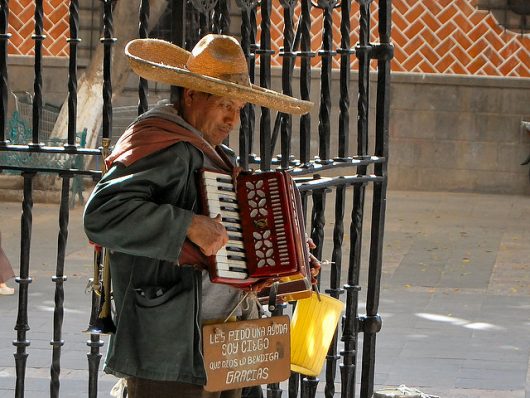
Top 5 Facts About Mexican Slums
- Mexican slums become breeding grounds for drug dealing and gang activity. Despite being among the richest nations in the world, Mexico’s poorest citizens live on less than $13 a day. The economic degradation leads many who live in Mexican slums to turn to drug dealing to support themselves and their families.
- One of the most commonly dealt drugs in Mexican slums is methamphetamine , a highly addictive stimulant drug that produces a high when inhaled or smoked. Desperate and impoverished, many residents of Mexican slums turn to dealing meth because it is a synthetic drug that can be made cheaply and sold for a high profit. The ease with which someone could make more money dealing drugs than working a real job is a telltale symptom of the depth of poverty present.
- The striking difference between affluent members of Mexican society and those who live in Mexican slums is most pronounced in photographs of Mexico City. Photographer Johnny Miller’s aerial photographs of Mexico City include brand new middle-class homes built right next to a rundown “barrio.”
- Approximately eight million people around the world live in slums, and in Mexico, most of those people are concentrated on the outskirts of the Mexican capital. Many rural residents travel to Mexico City in search of a better life only to wind up in shanty towns bordering the capital. However, many residents still believe that they and their families stand a better chance at finding a more dignified lifestyle in Mexico City than elsewhere. Al Jazeera reports on the Garduno family, who moved into Mexico City and lived with extended family in a small hut. Now, the Gardunos have their own home and are preparing to open a taco shop.
- Nezo-Chalco-Itza is the world’s largest slum , with about four million impoverished people living in it. The residents of this Mexican slum account for almost 10 percent of the population of Mexico City.
– Mary Grace Costa
Photo: Flickr
“The Borgen Project is an incredible nonprofit organization that is addressing poverty and hunger and working towards ending them.”
-The Huffington Post
Inside the borgen project.
- Board of Directors
Get Smarter
- Global Poverty 101
- Global Poverty… The Good News
- Global Poverty & U.S. Jobs
- Global Poverty and National Security
- Innovative Solutions to Poverty
- Global Poverty & Aid FAQ’s
Ways to Help
- Call Congress
- Email Congress
- 30 Ways to Help
- Volunteer Ops
- Internships
- Courses & Certificates
- The Podcast

- Local Policies
Mexico City's Slum Upgrading Programme
Neighbourhood improvement community programme implemented in 2007. Case study written in 2010.
[ Click here to read the case study ]
19.42847, -99.12766
- Business & New Markets
- The Good News
- Global Health

Community and Culture Flourish in Mexico’s Largest Slum
MEXICO CITY — What Mexicans call “the lost city” finds its home in the drained bed of Lake Texcoco, not far from where the Aztecs built their empire hundreds of years ago. The area is composed of three cities–Nezahualcóyotl, Chalco and Ixtapaluca–and is Mexico ‘s largest slum. It is considered by some to be the world’s largest slum.
Although this region has access to water, electricity and other amenities, most residents live well below the national poverty line of $117 per month. The crime rate is among the highest in Mexico, due in part to the popular “cholo” culture inspired by gangs in Los Angeles and other major U.S. cities. In most parts of this “mega-slum,” garbage is collected in carts pulled by donkeys and the houses are composed of unpainted cinder blocks.
This region, also called Neza-Chalco-Izta, has been described as drab and unsightly for its lack of colonial style buildings. However, a thriving community and a growing culture dwell within the structures. The fertile ground of Mexico’s largest slum is home to many beautiful things.
Junior Symphony Orchestra of Neza Established in 1998 by a professionally trained musician, Roberto Sanchez Chavez, the Junior Symphony Orchestra of Neza was formed with one goal in mind: to divert children from criminal culture. Chavez hopes that by teaching children to perform classical music, they will develop valuable characteristics such as discipline and the ability to work well in a team.
How will music stop crime? “Music is one of the most complete and rich fine arts of the human spirit,” Chavez says in his blog . “Teaching it…helps to form whole and healthy individuals in society.”
The award-winning orchestra, composed of around 45 children and adolescents, plays a mesh of classical works, contemporary pieces such as the theme from Titanic and local Mexican banda music. They have performed hundreds of times, both inside and outside of Neza.
Ciudad Jardín Bicentenario The Jardín Bicentenario within Neza contains a shopping mall, a hospital, a rehabilitation center and off-site campuses of several universities. However, until ten years ago , this same plot was a landfill with 12 million tons of trash and was classified as one of the dirtiest places in the world by the World Bank.
In 2006, efforts were made to seal off the landfill and begin the process of reclaiming the land. In time, additional plans formed for the development of a community hub centered on the new space. This project has helped create thousands of jobs for the residents of Neza and has benefited the economy of the entire region.
Community Services While still considered one Mexican slum, this sprawling area is governed by three separate municipalities, each with their own approach to alleviating the effects of poverty.
In Neza, many community services stem from the Jaime Torres Bodet Cultural Center. Created in 1987, this building serves as a center for musical productions, art displays and foreign language instruction. Entrance is free to all visitors, allowing for a peaceful escape from the harsh streets.
Community directors have also placed a large focus on athleticism. Neza has devoted significant funds to building facilities for soccer and organizing youth sports leagues.
Giving the Poor a Chance Thousands of people began migrating to Mexico’s largest slum during the 1900’s in search of affordable living spaces. In the 1970’s, rental prices in Mexico City became increasingly expensive, driving poorer people to buy their own plots of land in places such as Chalco for as little as $88. Although the land only allowed them to build meager concrete structures, it was something they could call their own.
These informal communities eventually grew into urban cities with electricity, soccer stadiums and even a zoo. Homeowners have begun to paint and plaster their homes in vibrant colors, transforming the drab grayness of the city. Nevertheless, gangs and drug dealers still dominate and residents struggle daily to make ends meet.
Recently, the Mexican government has reported that 1.5 million people were no longer living in extreme poverty. Through government programs, foreign aid and the efforts of community members mentioned above, the effects of poverty can be soothed.
– Emiliano Perez
Photo: Wikipedia
Related Posts
Youth-to-youth fund: tackling youth unemployment in ethiopia, reducing poverty and gang violence in ecuador, how moyo goods powers community in malawi.
Comments are closed.
Type above and press Enter to search. Press Esc to cancel.
- International edition
- Australia edition
- Europe edition
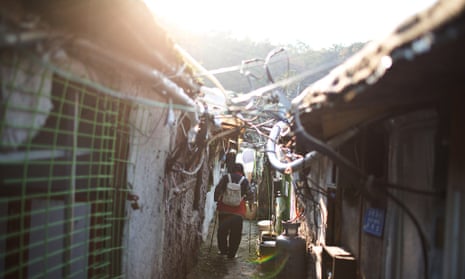
There’s a global housing crisis and politicians must do more to tackle it
Access to safe and affordable housing is vital in both the north and south. But how much will it cost and do politicians care enough about the urban poor?
T he official figure for the number of people who live in slums is 863 million people , but that number is more likely to be 1.3 billion and by 2050 the world’s slum population will reach well over two billion on current trends. So the target in sustainable development goals to “ensure access for all to adequate, safe and affordable housing and basic services, and upgrade slums by 2030” seems overambitious at best, and simply delusional at worst.
To know whether a target to “upgrade” slums can be achieved it has to be measurable, but for many slums there are only rough population counts without detailed enumeration. Experience in India shows that when a proper, community-based census does take place, the real numbers turn out to be much higher than the estimates.
Dharavi in Mumbai, possibly Asia’s biggest slum, has one million people crammed into one square mile; Mumbai itself has more than nine million slum dwellers, up from six million a decade ago. Yet in 2009, India launched just the sort of plan that the UN goals would encourage, aiming for a slum-free India within five years . Since then the slums have grown unabated. This suggests there is a range of problems in delivering the UN target.

First, the world is moving inexorably to city dwelling, with more than half of humanity now living in cities . Ninety percent of new urban growth is taking place in developing countries and one third of their city population already lives in slums. While 95% of slum dwellers are in developing countries, even metropolises like London have a growing problem of “ beds in sheds ”.
Second, the physical and legal challenges of slum settlements can be overwhelming. In a city like Caracas, where the poor want to live as close as possible to jobs in the city centre, most slums occupy precarious sites that are susceptible to landslides. Elsewhere, slums might sit on the slopes of an active volcano, bestride an earthquake fault or in the flood-prone basin of a former lake – all sites eschewed by mainstream housing developers. Almost all slums have complex issues about land rights, and the lack of land ownership creates a vicious cycle – not only public authorities, but banks and developers are unwilling to invest without clear land titles.
Third, replacing bad housing – or even repairing it – is costly and complicated – estimated costs vary considerably and global figures are scarce. One estimate from 2005 for the previous Millennium Declaration to improve 100 million slums by 2020 was that the 15-year target would cost an enormous $300bn. And even this assumes 80% of the costs will be met by the slum dwellers themselves.
The cost of upgrading slums doesn’t mean it can’t be done. Sao Paulo won an award for its slum upgrading programme, implemented over two decades. But compared with other cities, its slum population (800,000) is modest. The task facing Mexico City, which hosts the Neza-Chalco-Itza slum area with its four million inhabitants, is more typical of the developing world’s big urban centres and far exceeds the budgets of municipal authorities.
As politicians try to court the growing middle classes the world over, housing policies shift and the benchmark for affordability is raised. Meeting poorer people’s housing needs requires bigger subsidies just at a time when most countries are cutting back on public spending – or even pulling out of subsidised housing altogether. If this is happening in rich countries such as Britain and the US, it is even more likely in poorer countries with tighter budgets and limited tax bases.
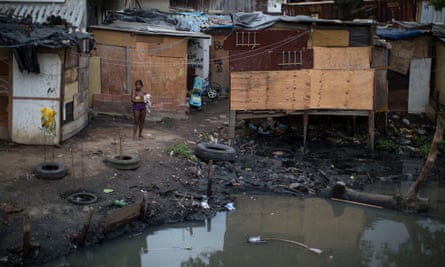
The above recognises that policy and price are two important determinants of whether the SDG target can ever be achieved. But a third determinant is possibly the most important: participation. Programmes to improve slums or rehouse their occupants often don’t engage properly with the people themselves. This means that they are likely to be resisted and – if they do go ahead – more likely to fail.
Putting “the urban poor at the centre of strategies for urban development” is the very reason the organisation Shack/Slum Dwellers International was set up. Its president, Jockin Arputham, may have been recognised with a Nobel Prize nomination , but their work is far from over. The urban poor are still unseen and unheard and until that changes, the UN’s ambition to curb slum dwelling has no chance of being achieved, whatever resources are devoted to it.
That said, just because the target is hard doesn’t mean it shouldn’t be attempted. Slums may be poor, but they are economic powerhouses, with their mostly young populations finding innovative ways to generate income in an informal economy.
Most of the resources to upgrade slums will inevitably come from these people, whether through the community savings schemes run by Interação in Brazil, women’s group Mahila Milan and their self-build housing in Mumbai, or the Centre for Community Initiatives ’ pit latrine programme in the slums of Dar es Salaam. Such projects often need seed funding and an injection of expertise to get going. The development community can provide this. But if more governments were to change their approach and begin to trust, promote and invest in slum dwellers, then they might start to keep pace with the problem rather than falling ever further behind.
John Perry is policy adviser at the Chartered Institute of Housing
Join our community of development professionals and humanitarians. Follow @GuardianGDP on Twitter.
- Working in development
- Development disruptors
- Cities and development
- Urbanisation
Most viewed

- See all results
The Melody of Politics: Eurovision’s (A)political Spectacle
National bubbles in international student environments, the continuous struggle of the women in the democratic republic of the congo.
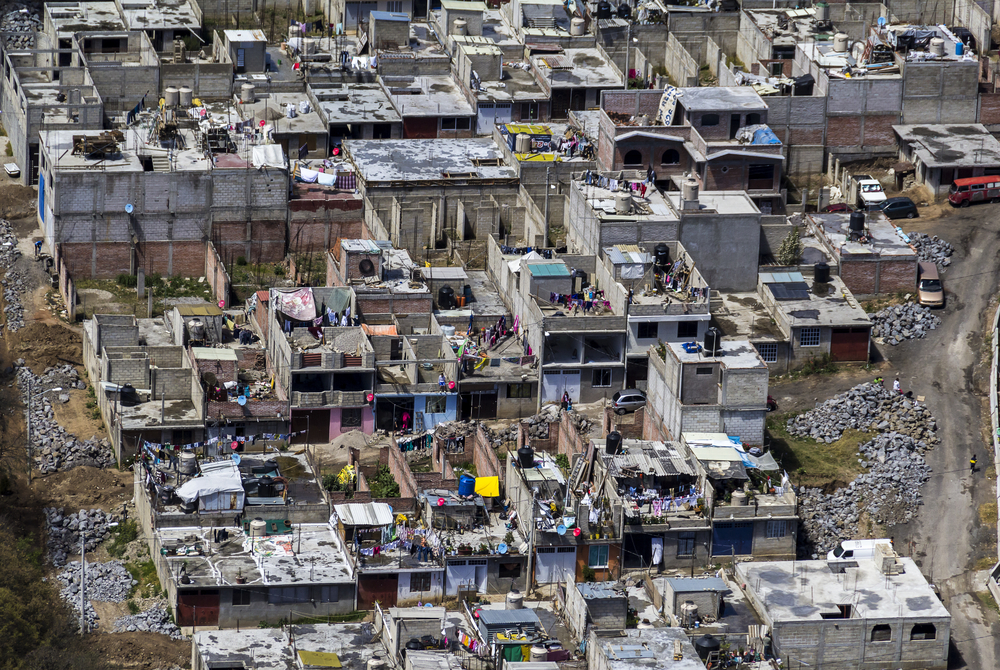
Urban poverty on the fringes of Mexico City and the challenges of informality
Mexico is a country with high levels of urbanisation. Most of the growth has not taken place in the city centres, but in the peri-urban areas surrounding Mexico City that are characterised by a mixture of rural and urban landscapes. While Mexico is marked by a growing middle-class, poverty and deep inequalities still persist. This is especially true in the peri-urban areas of cities where informal settlements and slums are common. Informal settlements, or colonias populares , are areas that have not been planned by city officials or the municipality, but rather have evolved and emerged out of the human need for shelter where access to the formal housing market is not an option. They are characterised by their insecurity of tenure and disconnect from formal mechanisms and institutions providing access to basic services. In many cases, the Mexican government is not improving the living conditions of those residing in colonias populares but is actually contributing to their insecurity.
The emergence and rapid growth of informal settlements is not an inevitable process wherever urbanisation occurs. Rather, its root causes can be found in the insufficient action of governmental bodies regarding urban spaces. For example, the inability to ensure low-cost and affordable housing to accommodate a rapidly growing urban population, coupled with weak urban planning and governance directly contributes to an increase in informal settlements. In Mexico City, the initial development of self-built housing, informal settlements and illegal tenure was largely enabled by the rather laissez-faire approach of the Mexican government. Thus, the forming of informal and irregular settlements was essentially facilitated by the government as a way of mitigating the nation-wide housing shortages. The development of informal settlements in the peri-urban fringe of Mexico City was also largely accepted due to the political benefits it yielded—the informal sale of land was exchanged for the residents’ loyalty and political support.
Informal and insecure tenure directly contributes to unreliable service provision, and the consequences are detrimental to communities. Lack of access to basic and urban services such as water and sanitation, health care facilities, public transportation, etc. means that irregular settlements are characterised by high volumes of inequality and low standards of living. Water often needs to be obtained privately either due to settlements existing outside of the formal infrastructure or because state services are severely lacking in quality. A consequence of this is significant costs for households in irregular settlements where families might be forced to spend up to half of their monthly income only on water. Informal settlements are also by nature remote and often lack sufficient connections to urban spaces.
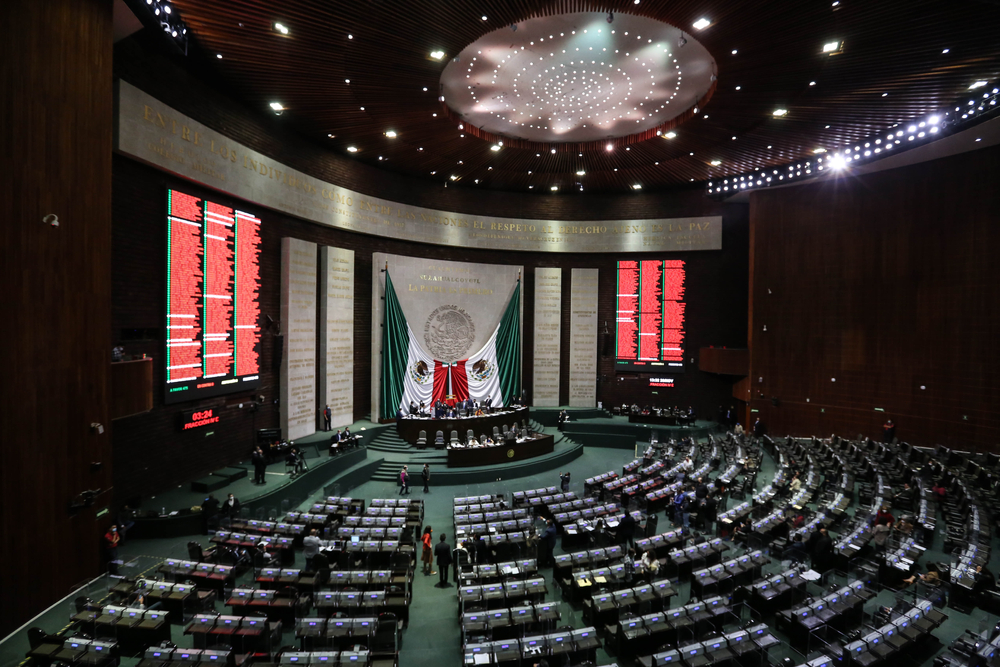
Since the 1970s, a national land reform aimed at formalising informal settlements has been the main mode of urban governance in Mexico. Its goal is to integrate the urban poor and marginalised politically, spatially, and socio-economically. Policy measures to formalise informal settlements include giving property rights to residents and ensuring that the land complies with Mexican law. This enables residents to make use of and gain revenue from the land. Ultimately, it also aims to incorporate areas into the official jurisdiction and responsibility of the municipalities, as a way of safeguarding access to basic services.
Land tenure security and regularisation efforts are often hailed as solutions for problems existing within informal settlements—especially regarding the question of inequality. However, the evidence from Mexico differs. The degree of consolidation—tenure security obtained, access to services such as telephone lines, roads, sewage systems or water access installed—has varied greatly both across time and between the different colonias . Financial problems or disintegration of the housing conditions have caused some previously regularised settlements to become irregular again.
One of the main issues is that many colonias populares exist in a perpetual state of ambiguity and fragmentation. In the peri-urban context where several different systems, frameworks of governance, and legalities overlap with each other the problem becomes even more pronounced. The way cities are divided into formal and informal areas can create inequality and different levels of development. This depends on who owns the land: whether it is private, under collective ownership for agriculture ( ejido ), or if the municipality is responsible for it. As a result, providing services to these areas can be confusing, with different groups involved and lacking coordination. This makes the existing inequalities worse—some areas have more resources and opportunities than others. This is highlighted well by an employee from the Xalapa Department of Urban Development: “[…] it’s not very clear where the authority of the ejido ends and the authority of the municipality begins … each is protected by their norms.”.
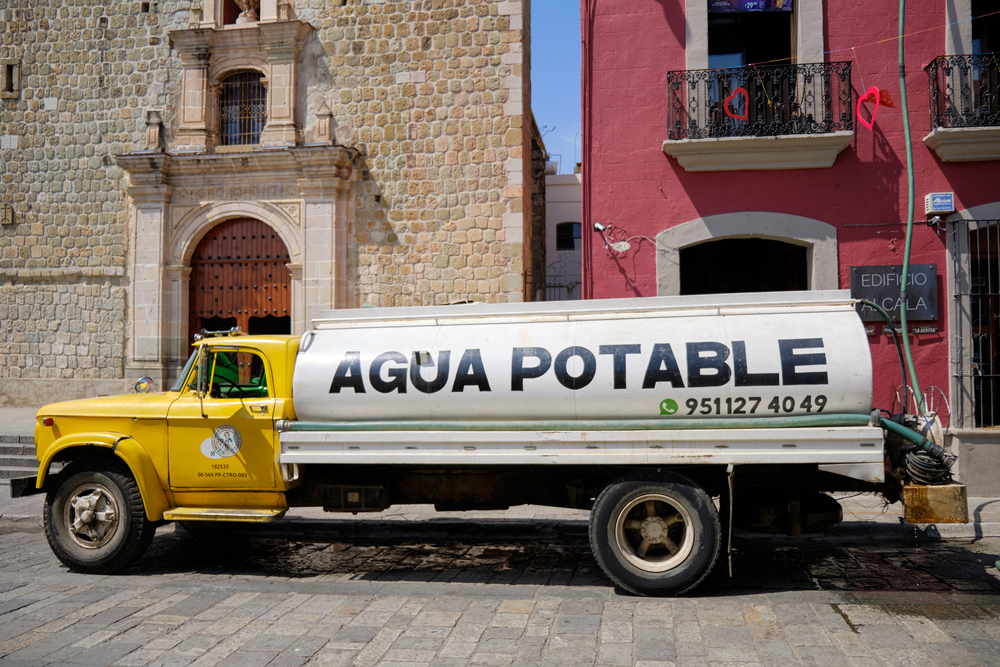
One example of this ambiguity is the peri-urban area of Santa Lucia which has undergone processes of urbanisation. Yet, the land is still legally under the possession of the ejido and is formally recognized as rural agricultural land by the municipal jurisdiction. The area exists in a state of ‘legal invisibility’ where the land is neither completely rural nor completely urban, as formal recognition (and thus integration into the urban infrastructure) can only occur following tenure regularisation. In this way, the legality surrounding access to basic services such as water is rather contradictory. The constitution states that access to water is a right for all citizens of Mexico City, however, in practice such rights are only applicable to residents in formal housing as people living in informal settlements are not legal residents.
The widespread growth of slums and informal settlements in Mexico City is a problem that deserves continued attention from policy-makers in both local and national government. In particular, the negative effects that such living conditions have on residents’ health and safety should be prioritised. It is also clear when looking at the case of Mexico City that a hard distinction between rural and urban land—which is often reiterated in municipal legislation—is unfruitful and creates a potential breeding ground for conflict due to the lack of coordination and confusion around responsibility. Thus, dealing with the fragmentation, poor coordination, and capacity development of municipalities, ejidos , and governmental bodies ought to be a core principle guiding the future of Mexico City’s urban policy. In the end, we have to ask how we can better facilitate an urban space where everyone, not merely those with formal status, can gain access to the city and to basic services.
By Sara Friman
When the need for housing becomes a crime: informal settlements in Chile
- Like our page
- Magazine Archive
2024 © The Perspective – All Rights Reserved
Subscribe Now
Scenes from Neza: Mexico's Self-Made City
Ciudad Nezahualcóyotl is the prototypical informal settlement of metropolitan Mexico City. Built just over the line from the Distrito Federal in the Estado de México, Neza—as it is commonly called—looms large in the imagination of the city. From its beginnings as an illegally developed, planned, and built settlement in the late forties, Neza has served as a powerful image of self-built, so called “informal” urbanism. A pair of my fellow Fulbright grantees, David Adler and Paulina Reyes , have recently been writing on the valorization, from the outside, of informal architecture. The fact that I’ve been getting to know Neza recently has inspired me to weigh as well.
A typical home in Neza — Photo by Author, Click to Enlarge
Neza’s development is tangled, and worthy of a longer history than this, but a few things are clear. In Mexico City at the close of the Second World War, there was a flood of migrants to the city, where they crammed into central-city tenements reminiscent of New York at the turn of the century. Where there’s a need, there’s a means; in Mexico City at that moment, that meant a development company, operating in the open, subdividing land that they had no legal right to sell.

Public Space in Neza — Photo by Author, Click to Enlarge
They were able to sell, and families desperately seeking homes of their own were able to buy, because Neza was built on land that hadn’t even existed in 1900. Though much of the lake system upon which the pre-Hispanic city had floated had dried up, Lake Texcoco, to the east of the city center, was a body of water well into the 20th Century. When the land beneath—alkaline, packed down, and low-lying—had fully emerged by the 1940s, its ownership was unclear. In a pattern that would be repeated through the present moment, the land was occupied, through various unofficial means, and slowly built into a functional piece of the metro area. Today, Neza is Mexico’s tenth biggest municipality, with 1.1 million residents.
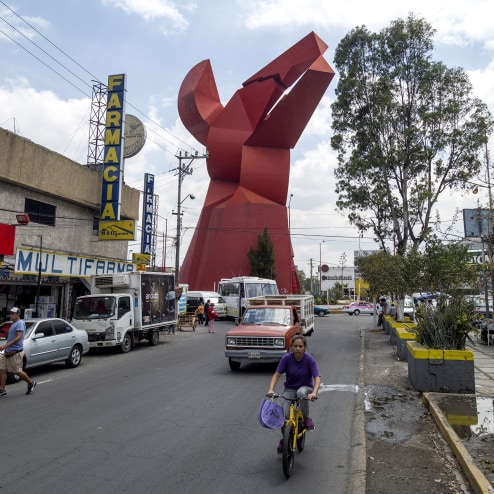
Cabeza de Coyote - a Sculpture in the center of Neza — Photo by Author, Click to Enlarge
Though the developers laid out a street grid and advertised delineated plots for sale, the residents moved in before the infrastructure. Even as the city ballooned in population in the 1960s, much of it was still without official hookups to electricity, clean water, and sewage services. What David refers to as the “banality of poverty” in the neighborhoods that he’s worked in, the daily grind of the working-class in Mexico City, would have referred in Neza at that time to contracting water trucks, perhaps stringing up pirate electrical wiring, and the slow construction of the now ubiquitous 2- or 3-story cinderblock homes of Neza.

A Motorcyclist in Ciudad Neza — Photo by Author, Click to Enlarge
David’s conception of this “banality” is meant as a counterpoint to a sort of Slumdog Millionaire romanticization, by planners and architects, of what are often called “slum” neighborhoods. Paulina brings up Urban-Think Tank and Justin McGuirk’s award-winning research into the famous Torre David in Caracas, an incomplete office tower that was repurposed into housing by the organized poor in that city. (Disclosure: I’ve worked with Urban-Think Tank, though not on that project.) The worry is, of course, by being impressed by the design innovations of marginal communities, we in the planning and design fields ignore their real challenges, their continuing struggle. We revel in their ingenuity in the face of government neglect, and in doing so, it is argued, justify the latter.
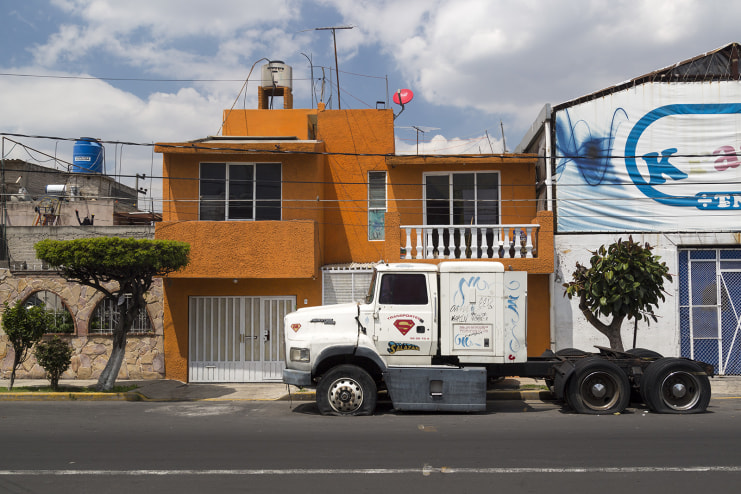
A Home in Neza — Photo by author, Click to Enlarge
I have to disagree with this train of thought, especially when it is brought to its seemingly logical conclusion, which David hints at at the close of his piece. I agree that there are “real dangers to…bulldozing over slums just to erect ugly and barely functional public housing,” but struggle a bit with the idea that the dangers of the “poverty aesthetic” are “even bigger,” or that they amount to “ignoring the pleas of the poor.” This presupposes that we, as outsiders to these communities (and often the very countries themselves), are obligated to intervene architecturally in these people’s homes. I believe the older informal settlements of Mexico City demonstrate that, given time, they can succeed without us.
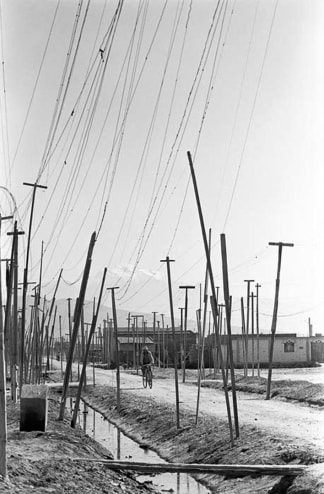
A famous image of Neza in the 1960s by the photographer Hector García
Neza fought for far too long for its basic needs: the provision of services. It’s shameful for a government to allow hundreds of thousands of residents to live adjacent to an open canal pressed into service as a sewer. At the architectural scale, though, allowing them to participate in the construction and design of their homes, if not perfect, does more good than harm. Walking the streets of Neza, the sheer diversity of built form reflects the myriad needs of its residents, and their ability to shape buildings to meet those needs. While few now propose the imposition of modernist housing blocks to replace “slum” housing, as architects, planners, and urban designers did time and time again throughout the 20th century, the economies of scale housing movement of the contemporary era has proven similarly unpalatable.

A home in Neza — Photo by author, Click to Enlarge
My home in Cuautitlan, like the hundreds of thousands of units developed by the government’s Infonavit agency in partnership with large construction and design firms, is a clear attempt to provide an alternative to self-built construction in Mexico City’s periphery. It’s aspiration seems to be that “middle-class” existence that David points to in his writing: a house, a TV. The Infonavit homes are cheap, and though they are limited to workers in the formal sector, those whose work is recognized by the government and taxed, the housing is still available to millions. And yet, across the country, some 400,000 Infonavit homes are vacant , abandoned by their leaseholders or never sold. Their cookie-cutter designs, their often dismal urban realm, and the planning that has led to their placement in the furthest-out regions of cities have proven a resounding failure. Further, where the neighborhoods are occupied, and relatively successful, a process of informalization—a customization of the ‘expert’ plan—quickly takes shape, as I have observed in my former subdivision of Galaxia .
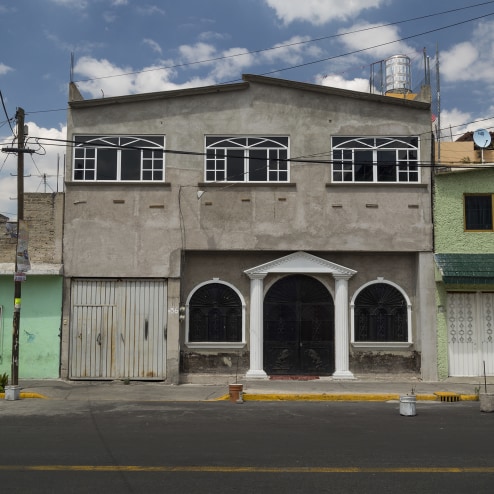
A decorated home in Neza — Photo by author, Click to Enlarge
Neza, after nearly 70 years of history, feels like a normal part of the city. It is banal, in that sense, but I would argue a success. A long process of resident organization and eventual government support has succeeded in connecting homes to the city services. Many homes look finished; it’s remarkable how quickly a bit of plaster and paint can make a grey, cinderblock structure look like a home anywhere else in the city. Neza is quiet streets of homes on what was once an edge of the city. It is, after a long history of regularization, in terms of infrastructure and land titles, normal on its own terms.
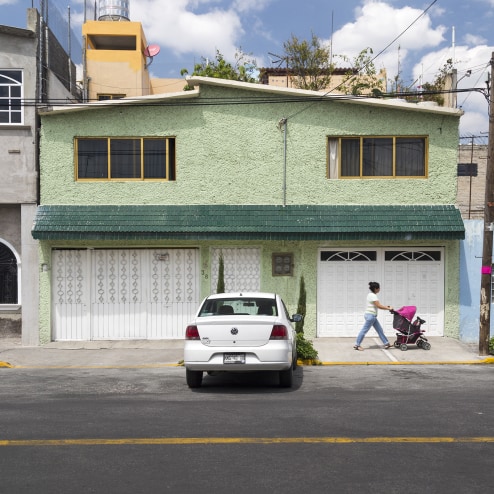
Every neighborhood, every home should be aestheticized, if by that we mean looked at, investigated, perhaps photographed, and more than anything, learned from. It’s a matter of respect, I would argue, to recognize achievements in design wherever they crop up. If they’re made out of poverty, or desperation, then the roots of that inequality absolutely demand consideration, though perhaps not by designers. To perpetuate those inequities by failing to provide services to the needy is abhorrent. But to conflate informal architecture with its causes is a mistake. To deny its merit, its ability to provide a basis for self-improvement would be a failure on our part. Finally, though it is far from the most pressing need for most residents, to ignore what informality has done to empower the disenfranchised in the design of their own space would be a sorely missed opportunity.
The National Geographic Society is a global nonprofit organization that uses the power of science, exploration, education and storytelling to illuminate and protect the wonder of our world. Since 1888, National Geographic has pushed the boundaries of exploration, investing in bold people and transformative ideas, providing more than 15,000 grants for work across all seven continents, reaching 3 million students each year through education offerings, and engaging audiences around the globe through signature experiences, stories and content. To learn more, visit www.nationalgeographic.org or follow us on Instagram , LinkedIn, and Facebook .
To read this content please select one of the options below:
Please note you do not have access to teaching notes, recasting urban imaginaries: politicized temporalities and the touristification of a notorious mexico city barrio.
International Journal of Tourism Cities
ISSN : 2056-5607
Article publication date: 16 June 2021
Issue publication date: 15 October 2021
The purpose of this paper is to point to the significance of temporally charged imaginaries of neglected places and their residents in the context of slum tourism research. It examines the way in which tour guides draw on specific temporalities to recast the poverty and stigma of the Mexico City barrio of Tepito and thus design narratives to alter long-held imaginaries of this neighbourhood.
Design/methodology/approach
Two tours are analysed through an anthropological lens using ethnographic methods. Authors took part in the tours, registering the guides’ discourse and interventions, as well as the places and situations observed. The insights of this paper stem from the empirical evidence and reveal how diverse imaginaries are enacted through tour guiding.
Without necessarily following a single, coherent narrative, tour guides link different moments in time to simultaneously generate and contest slum tour imaginaries. The guides in this case study not only challenge existing stereotypes, but also critically engage political neglect while showcasing Tepito’s potentiality. Even so, the analysed tours seek to recast the barrio as integral to Mexico City’s history and future.
Originality/value
Until now, the importance of temporalities in the generation of imaginaries in slum tourism research has gained only little attention. The case study presented here show how alternative forms of tourism are offering unconventional readings of urban neighbourhoods. These processes, the authors argue, help not only re-imagine disadvantaged districts, such as Tepito, but also to re-think the city as a whole in terms of its past, present and future.
- Imaginaries
- Poverty tourism
- Stigmatization
- Temporalities
Acknowledgements
The authors are grateful to the people in Tepito for their support and collaboration. This article benefitted from Alessandro Angelini, Rivke Jaffe, Gareth A. Jones and Alana Osbourne, authors and colleagues in a tri-lateral research project on “slum tourism” in the Americas. The authors are also indebted to the anonymous reviewers for their constructive comments. The authors thank the Deutsche Forschungsgemeinschaft for funding research projects that this article is based on (AC 311/1–1; DU 209/18–1).
Dürr, E. , Acosta, R. and Vodopivec, B. (2021), "Recasting urban imaginaries: politicized temporalities and the touristification of a notorious Mexico City barrio ", International Journal of Tourism Cities , Vol. 7 No. 3, pp. 783-798. https://doi.org/10.1108/IJTC-02-2020-0024
Emerald Publishing Limited
Copyright © 2021, International Tourism Studies Association.
Related articles
We’re listening — tell us what you think, something didn’t work….
Report bugs here
All feedback is valuable
Please share your general feedback
Join us on our journey
Platform update page.
Visit emeraldpublishing.com/platformupdate to discover the latest news and updates
Questions & More Information
Answers to the most commonly asked questions here
- Climate Change
Neza-Chalco-Itza, Mexico City: Coping and Responses to Water Supply Constraints
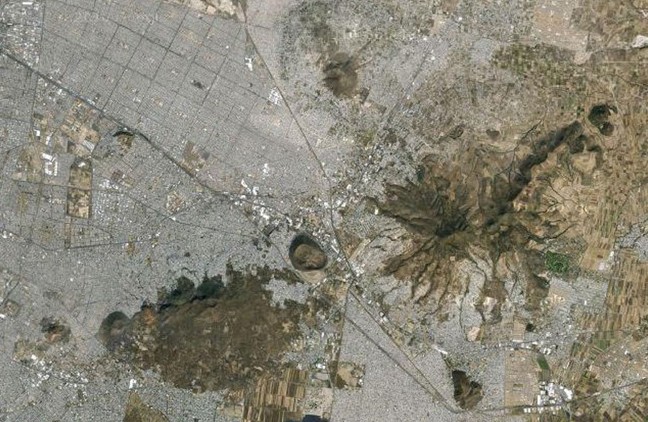
Unmapped and Unknown: Neza-Chalco-Itza, Mexico City
Mexico City’s Neza-Chalco-Itza slum has four million people (Jacobson, 2007). Land area of the slum is unavailable. Mexico has a high level of income inequality with a Gini coefficientof 51.7 making it the 18 th most unequal country in the world (CIA, 2011).
The majority of slum residents in Mexico City work in the service sector as household help or manual labor (UNHABITAT, 2003). A primary infrastructure challenge is the lack of water supply within the household. The 2000 census found that 1.8 million people live without water inside their homes (Connolly, 2010).
In order to address this infrastructure constraint residents buy water. Households that can afford to build a cistern and buy water from delivery truck services. In Mexico City the government provides potable water for free, but the distributors charge between 80 and 500 pesos per truck. That fee is charged to the customers. Poorer families purchase 200-liter drums of water from intermediaries costing families over half of a monthly minimum wage on water. As a result, families ration their water. Households lacking vehicular access carry water in plastic buckets or harvest rain (Connolly, 2010).
Addressing the lack of water access in Mexico City is complex because the entire city is using water at a rate that is sinking the city into the ground due to depletion of the water table (Sletto, 1995). I recommend a three-part policy approach. First, the city needs to reduce wasteful water use. For example, sidewalk watering should be fined. Mandate use of water efficient toilets in all government buildings and hotels. Second, implement education campaigns about the water crisis throughout the city. Third, installing mobile water units in communities where residents can get water at the same cost as piped water supply. In order to transport water in inaccessible locations ergonomic carriers such as the Q Drum or Wello offer options (QDrum, 2012 and Wello, 2012).
This article is a product of Professor Shagun Mehrotra’s Global Urban Environmental Policy class. Views expressed are entirely those of the individual author
Badkar, M. (February 7, 2011). A Shocking Satellite Tour Of The World’s Biggest Slums. Business Insider. Retrieved February 7, 2011, from http://www.businessinsider.com/worlds-biggest-slums-2011-2
CIA. (2011). Country Comparison: Distribution of family income – Gini index. CIA Factbook . Retrieved January 31, 2012, from https://www.cia.gov/library/publications/the-world-factbook/rankorder/2172rank.html
Connolly, P. (2010). Urban Slums Reports: The Case of Mexico City, Mexico , Universidad Autonoma Metropolitana-Azcapotzalco: Mexico City. 30.
Jacobson, M. (May 2007). Mumbai’s Shadow City. National Geographic, Retrieved January 31, 2012, from http://ngm.nationalgeographic.com/2007/05/dharavi-mumbai-slum/jacobson-text
Google. (2012). Google Earth (Version 6.0.3.2197) [Software]. Available from http://www.earth.google.com
QDrum. (2011). About Q Drum. Wello. Retrived January 31, 2012, from http://www.qdrum.co.za/
Sletto, B. (1995). That Sinking Feeling. Geographical , 6:7. 24-27.
UNHABITAT. (2003). The Challenge of Slums. London: Earthscan.
Wello. (2011). The issue. Wello . Retrieved January 31, 2012, from http://wellowater.org/
Tags: North-America
- Destinations
- Tours in Mexico City
La Lagunilla - Sunday in the Slum Free Tour Mexico City
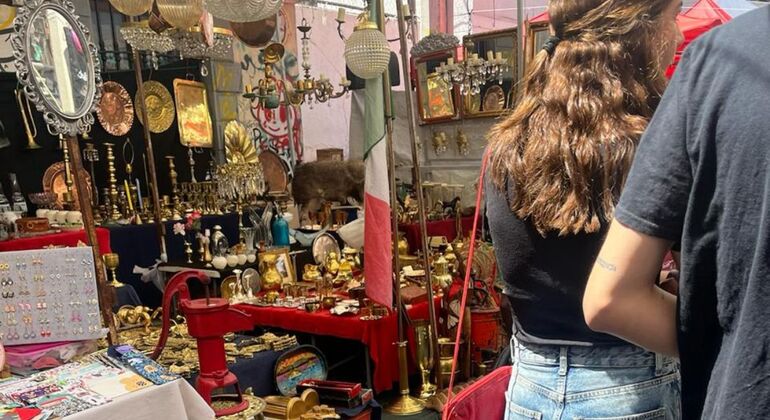
Overview of the tour in Mexico City
join us in one of the most authentic neighborhoods in Mexico City: La Lagunilla! Every Sunday, this charming corner comes alive with its famous antique market, becoming a melting pot of culture and tradition. Our adventure begins at the Palacio de Bellas Artes, from where we will head to La Lagunilla like real locals, walking or using the Metrobus. During our tour through the streets of La Lagunilla, you will have the opportunity to delight yourself with the exquisite taste of pulque, a traditional Mexican drink, as well as to refresh yourself with a cold beer while we explore its colorful stalls and enjoy the live music that fills the atmosphere. You will find a wide variety of treasures ranging from unique antiques to handcrafted jewelry, local style clothing and a delicious gastronomic offer (with vegetarian options).
This activity includes:
- Palacio Postal
- Palacio de Bellas Artes
- Tianguis La Lagunilla
- Botella de agua
Meeting point
Bellas artes
- Meeting Point: Esplanade of the Palace of Fine Arts. - How to get there: The Palace of Fine Arts is located in the Historic Center of Mexico City and is easily accessible by the following means: - Metro: Bellas Artes, Juarez and Hidalgo stations are close to the Palace of Fine Arts. - Cab or shuttle services: use apps such as Uber or local cabs. Simply enter "Palacio Bellas Artes" as your destination. - On foot: If you are staying in Centro Historico, you can easily walk to the esplanade of the Palace of Fine Arts, as there are many hotels and accommodations nearby.
Things to note
-We would be very grateful if you could leave us a review both on freetour and tripAdvisor. -We recommend you to wear comfortable clothes, bring a hat/cap, sunglasses and sunscreen. - It is necessary to bring money to compare food, drinks and souvenirs.
Free Cancellation
You are free to cancel a booking anytime. We kindly remind you to cancel bookings you cannot arrive for. Being reported as absent decreases your customer level points and the benefits you can enjoy.

- Join Freetour
- Provider Sign In
- Affiliate Program
- Security & Privacy
- Terms & Legal
- Cookie policy
- Freetour Awards
- Ratings & Reviews powered by

Unforgettable activities hosted by locals


Experiences you might like
Experiences you might like.
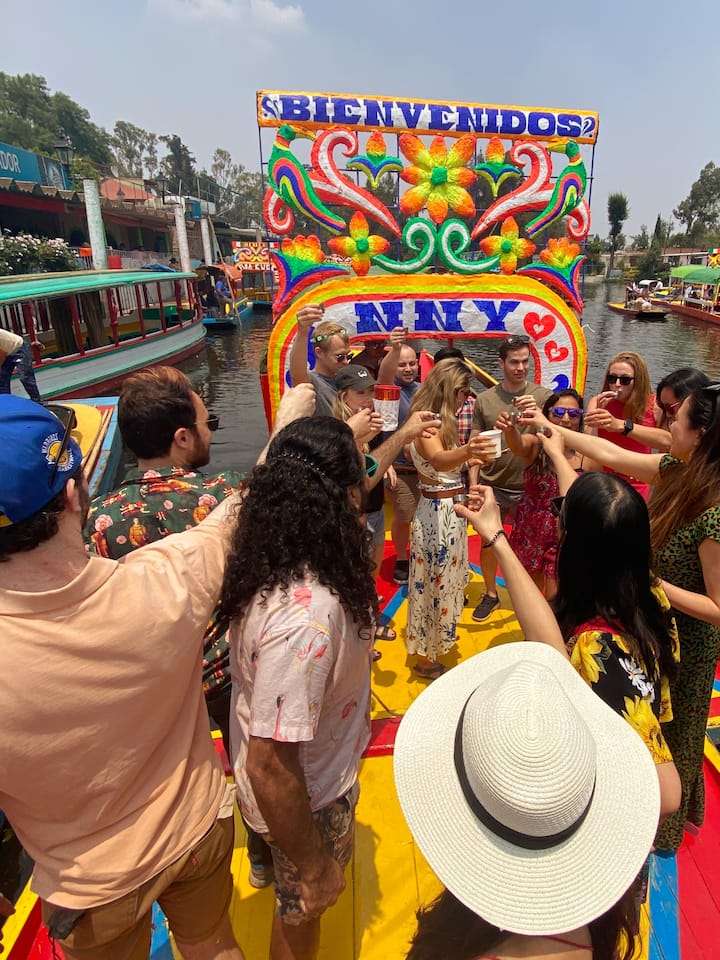
Highly rated for Host expertise
Highly rated for host expertise.
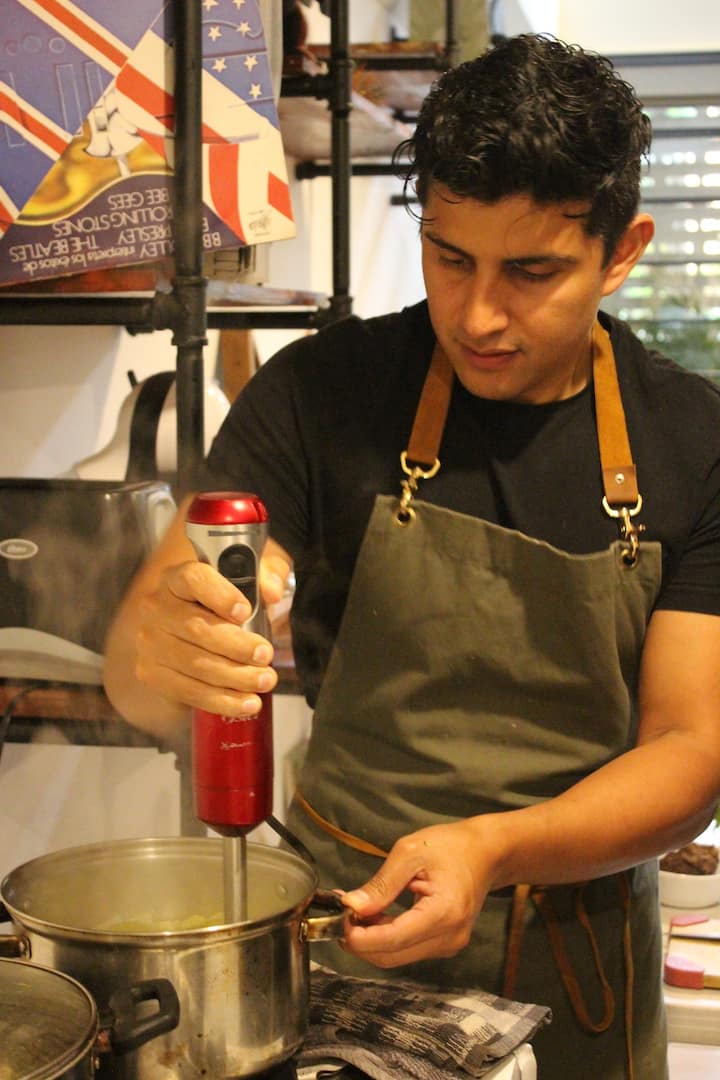
What Mexico City has to offer
What mexico city has to offer.
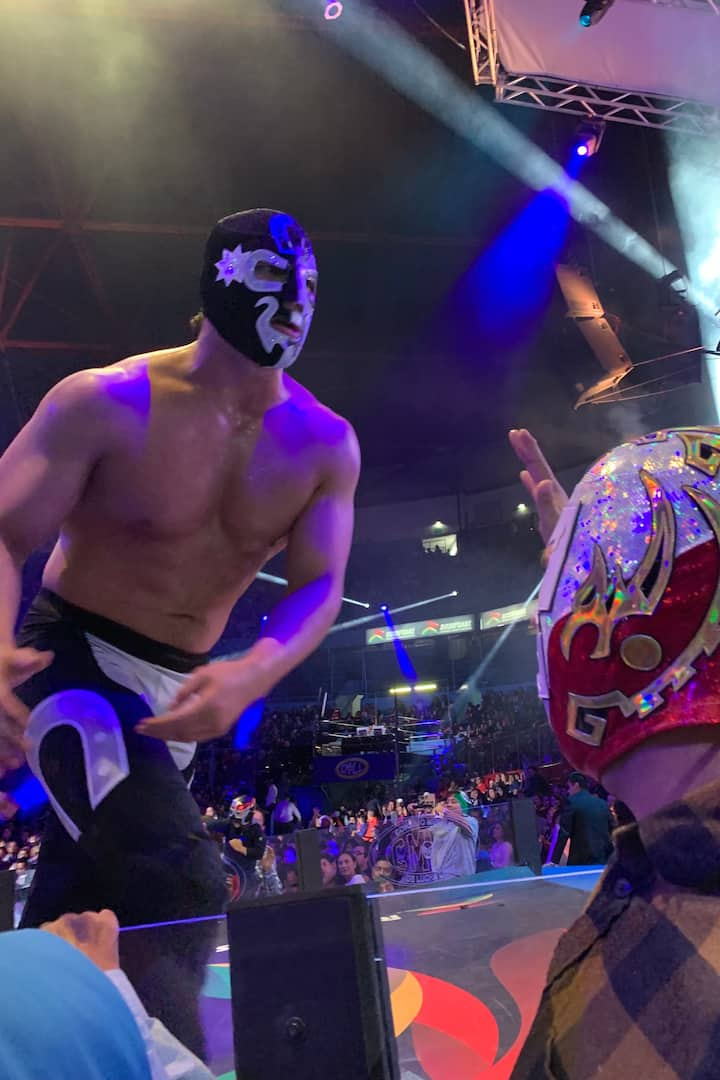
World / North America / Mexico / Mexico City, Helicopter Trip

Mexico City, Helicopter Trip
The Aztecs founded Mexico City in 1325 A.D. Spanish conquistadors led by the legendary Hernán Cortés conquered it two centuries later. In fact, the combination of ancient Indian traditions and young European ambitions is what makes the modern capital of Mexico unique.
Sights of Mexico City turned the capital into one of the most popular tourist destinations in North America. If put together, all of Mexico City's contrasts: high crime rate vs. hospitality of local residents, ultra modern skyscrapers vs. Aztec pyramids, slums vs. magnificent palaces, hills vs. plains — provide the city with a special unforgettable atmosphere.

The Plaza de las Tres Culturas ("Square of the Three Cultures") is the best illustration of harmonious coexistence of past and present surrounded by the Aztec pyramid of Tlatelolco, the Colonial Cathedral of Santiago, and the modern building of the Ministry of Foreign Affairs.

The Metropolitan Cathedral of the Assumption of Mary, located atop a hill on the north side of the Plaza de la Constitucion (the Zocalo, Constitution Square), is one of the largest and most ancient (1573 A.D.) cathedrals in Colonial America. Its central nave measures 110 meters in length and 55 meters in width; it has 51 vaults supported by 74 arches and 40 columns. Together with the vestry and the National Palace, the cathedral forms a magnificent ensemble that combines Renaissance, Baroque, and Neoclassicism.
In the northern part of the city one can find famous Basilica of Our Lady of Guadalupe — one of the most important churches in the entire continent. The Basilica houses the original tilma (or the cloak) of Juan Diego, which holds the image of Our Lady of Guadalupe. It was the main reason for massive — and voluntary — conversion of pagan Aztecs to Christianity. The first church was built here in 1531 A.D., but after some time it couldn't accommodate everyone. In 1987 a new grand church that could accommodate 20 thousand people was built next to the old one. By the way, the Basilica is one of the most important pilgrimage sites of Catholicism visited by 14 million people every year, which is the highest number of pilgrims in the world.

Chapultepec Park (Bosque de Chapultepec) is the largest urban park in North America and one of the biggest in the world. Its territory surrounds the 2325-meter high Chapultepec hill in Mexico City. The park occupies an area of over 686 hectares, ranking with the Bois de Boulogne in Paris, the Imperial Palace East Gardens in Tokyo, and Central Park in New York City. Not only it could be considered the "lungs" of Mexico City, but it is also a concentration of numerous cultural objects, such as the National Museum of Anthropology. Upon entering the museum, visitors are "greeted" by an ancient artifact — seven-meter tall monolith depicting the Rain God Tlaloc in a form of a fountain.

On top of the hill there is a castle of the same name, founded in 1785 A.D. by the Spaniard Bernardo de Galvez. Former residence of the governors, emperors, and presidents of Mexico now serves as the main exhibition hall of the National Museum of History.
Modern landmarks of Mexico City are as ambitious and impressive as their ancient counterparts. The symbol of the city is the (El Ángel de la Independencia) that was built to commemorate the centennial of the of Mexico's War of Independence, which began in the year of 1810. It is a 36-meters high column topped with 6.7-meter high statue of a winged goddess of victory. In her outstretched right hand she holds a laurel wreath, and in her left hand she holds broken chains. The sculpture is cast in bronze and covered with 24-carat gold.

The most famous skyscrapers of Mexico City are the Torre Mayor ("Big Tower" in Spanish) and the Torre Latinoamericana ("Latin-American Tower"). 55-story Torre Mayor, which was built in 2003, has a height of 230 meters and considered to be the highest building in the city. 183-meter high Torre Latinoamericana was built in 1956. It is smaller in comparison to its younger counterpart, but it became famous after successfully withstanding earthquakes in 1957 and 1985. At that time 7.9 and 8.1 points earthquake destroyed many buildings in Mexico City, including the television tower. The Torre Latinoamericana survived and became a symbol of security of the Mexican capital.

We can talk about Mexico City endlessly: a fusion of cultures is combined with an elegance and grandeur creating a unique story for each and every building in the city. But as they say, a picture is worth a thousand words — please, enjoy the magnificent scenery of Mexico City through our panoramas!
Video by Stanislav Sedov , photo by Stanislav Sedov and Dmitry Moiseenko
29 April 2022

Virtual Travels in 360°
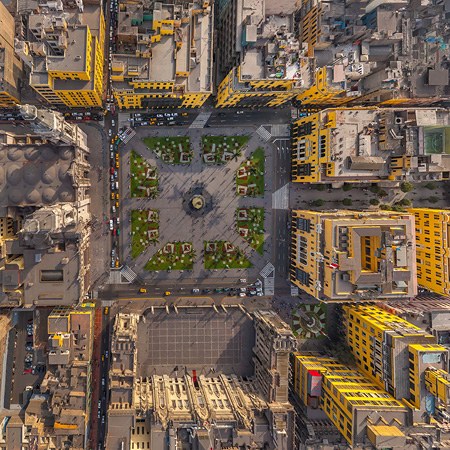
This virtual tour has not been commented on yet. Be the first!

International Luxury Lifestyle Magazine
A Luxury Mexico City Itinerary: 11 Best Places to Visit
Mexico City is a fascinating destination that should be on everyone’s travel list. This luxury Mexico City itinerary will show you the best of what the Mexican capital has to offer! From ancient ruins to trendy neighborhoods, there is something for everyone in Mexico City.
Luxury Mexico City Itinerary
Any Mexico luxury tour should include the capital. Mexico City is home to an incredible array of cultural and historical treasures, not to mention some of the best restaurants and shopping in Latin America. It’s also the largest city in Mexico. For many years, famous artists have made it their home and their legacy lives on in some spectacular museums.
But with so much to see and do, how do you create the perfect luxury Mexico City itinerary? This guide will take you on a journey through some of the city’s most famous landmarks and neighborhoods.
From the stunning Templo Mayor ruins to the vibrant streets of La Condesa, there’s something for everyone in this amazing metropolis. Together with Xochimilco, the historic center of Mexico City is a UNESCO World Heritage Site since 1987.
So grab your sunhat and get ready to explore one of the world’s most fascinating cities! Here are the best places to visit in Mexico City:

Palacio de Bellas Artes
Inaugurated in 1934, the Palacio de Bellas Artes is one of the most iconic buildings in Mexico City. This art deco masterpiece is home to the National Museum of Architecture , as well as a theater that hosts regular opera and ballet performances.
Visitors can admire the building’s ornate exterior or admire the murals inside that were created by famous Mexican artists such as Diego Rivera, David Alfaro Siqueiros, Jose Clemente Orozco and Roberto Montenegro. The Palacio de Bellas Artes is a must-see for anyone visiting Mexico City.

Chapultepec Park
Located in the heart of the city, Chapultepec Park is one of the largest urban parks in the world. Also known as the Bosque de Chapultepec (Chapultepec Forest), it is twice the size of Central Park in New York City. With 1,695 acres of land, the park is home to a variety of attractions, including museums, monuments, and gardens.
Visitors can also enjoy boat rides on the park’s lake, or walk to the top of Chapultepec Hill for sweeping views of Mexico City. There are several museums located within the park, including the Museo Nacional de Historia , within Chapultepec Castle.

National Museum of Anthropology
Be sure to include a visit to the National Museum of Anthropology. This world-renowned museum is home to an incredible collection of pre-Columbian art and artifacts.
Visitors can see ancient pottery, jewelry, and stone carvings, as well as learn about the history and culture of the people who created them. You’ll have the opportunity to learn about the country’s rich history and culture through interactive exhibits and lectures.
The museum also has a beautiful garden with a sculptures and fountains. The National Museum of Anthropology is a must-see for anyone interested in the history and culture of Mexico. We took a guided tour arranged by our hotel, the InterContinental Presidente Mexico City.

Also known as La Roma, this chic neighborhood is home to some of the city’s best shopping, dining, and nightlife. Start your day with a walking tour of Avenida Alvaro Obregon, window-shop at the designer boutiques, grab a coffee at one of the trendy cafes, and people-watch to your heart’s content.
For lunch, head to Migrante for beautifully presented Mexican cuisine or Contramar for fresh seafood overlooking the gardens of Alameda Central. In the evening, enjoy cocktails and live music at J&B Metrosideros, or dance the night away at Foro Alicia.
Alternatively, if you’re looking for something a little more low-key, you can explore one of the many parks or museums in Roma Norte.

Frida Kahlo Museum
No luxury Mexico City itinerary would be complete without a visit to the Frida Kahlo Museum. Located in La Casa Azul , or Blue House, where Kahlo was born, raised, and died, the museum offers a glimpse into Mexican culture and history.
With its gorgeous blue facade and lush gardens, it’s easy to see why Kahlo chose this location as her refuge from the busy city. Inside, you’ll find an intimate look at her life, with personal photographs and belongings on display.
The museum also features a selection of her most famous paintings, including self-portraits and works inspired by her Mexican heritage. The garden is a perfect place for photos.

One of the city’s most stylish districts is La Condesa, an upscale neighborhood known for its art deco architecture, trendy restaurants, and boutique shops. Visitors to La Condesa can start their day with a stroll through one of the neighborhood’s many parks, followed by some shopping or a leisurely lunch. Parque España is popular with dog walkers and runners.
In the evening, there are plenty of options for fine dining, live music, and dancing. Whether you’re looking for a day of luxury or a night on the town, La Condesa is sure to have something to suit your needs. It’s well worth taking a walking tour of the area so that you don’t miss all the hidden gems.

Luis Barragán House and Studio
Designed by Mexican architect Luis Barragán, Casa Estudio Luis Barragán is considered one of his most important works. This UNESCO World Heritage Centre is one of the most important examples of 20th century Mexican architecture, and it offers a fascinating glimpse into the life and work of its legendary namesake.
Visitors can explore the various rooms of the house, which have been left exactly as Barragán left them, and view his personal belongings and art collection. The studio is impressive, with high ceilings and an abundance of natural light. It contains many of his original drawings and sketches, as well as furniture and objects that he designed himself.
You can’t take photos in the house but it is possible in the garden opposite the property. A private tour of Luis Barragán House and Studio is a truly unique experience that fans of modern architecture should not miss.

This historic neighborhood has it all: world-class dining, chic shops, and breathtaking architecture. Start your day with a leisurely stroll through the shade-dappled streets, admiring the elegant mansions and pretty courtyards.
When you’ve worked up an appetite, treat yourself to a gourmet meal at San Angel Inn , one of San Angel’s top restaurants. There are several beautiful courtyards if you’d like to eat outside. Try a margarita, it’s a specialty of the house!
In the afternoon, browse the wares at local boutique shops or art galleries. On Saturdays, the area transforms into an indoor and outdoor craft market and art gallery, El Bazar Sábado .
San Angel is filled with beautiful historic buildings, tree-lined streets and a relaxed atmosphere.

Diego Rivera and Frida Kahlo House Studio Museum
Also located in the upmarket San Ángel neighbourhood, Museo Casa Estudio Diego Rivera y Frida Kahlo was once home to the famous artist couple. Designed by Mexican architect and painter Juan O’Gorman, the houses are inspired by the functionalism style of architecture. However, they are decorated in vibrant colors and feature rows of cacti.
Visitors can see Diego Rivera’s papier-mâché creations together with his drawing table and paint brushes. This is the perfect place to learn more about Rivera and his impact on Mexican art.
You can also see several Diego Rivera murals at the Secretaría de Educación Pública in the center of Mexico City. Another must-see for fans of the artist is the Museo Mural Diego Rivera , which houses one of his most iconic works. Sueño de una Tarde Dominical en la Alameda Central, or Dream of a Sunday afternoon in the Alameda, features hundreds of characters from Mexican history.

Templo Mayor Museum
If you have time, make a day trip to Teotihuacan , one of the Mexican capital’s most iconic landmarks. This huge archaeological site is located 48 kilometers to the north east of Mexico City.
However, if you haven’t got enough time for this during your trip, then you can see still some impressive artefacts at the Templo Mayor Museum in the center of Mexico City. Built in the 14th century, the Templo Mayor was the main temple of the Aztec gods and played a central role in Aztec religious life.
The Templo Mayor was dedicated to the god of war, Huitzilopochtli and the god of rain, Tlaloc. It was destroyed by the Spanish in 1521 but has since been excavated and reconstructed.
Today, the ruins of the ancient city of Tenochtitlan are a popular tourist attraction, and visitors can explore the site’s many chambers and learn about Aztec culture and history.

National Palace
The National Palace is located in the historic center of Mexico City and was built between 1563 and 1585. It served as the home of the Spanish viceroys until Mexican independence in 1821.
Today, the Palace is the official residence of the Mexican President, and used by the Mexican government for official events and receptions. It is also open to the public from Tuesday to Sunday.
You’ll need to bring your passport to gain admittance. Don’t miss the murals by Diego Rivera that depict centuries of Mexican history.

Where to Stay in Mexico City
For a truly luxury experience, stay at one of Mexico City’s top hotels, the InterContinental Presidente Mexico City , and enjoy all that this incredible city has to offer.
Located in the heart of Mexico City in the elegant Polanco district, the hotel is within walking distance of many of the city’s most popular attractions including Museo Soumaya and Museo Jumex.
This five-star hotel offers all the luxury and amenities you could want, including a spacious terrace and a relaxing spa. The staff are incredibly friendly and helpful.
The rooms and suites are spacious and beautifully appointed. We were fortunate to stay in the Master Suite Alberto Gironella , which boasts a see-through steam room and incredible views of Chapultepec Park.

The on-site restaurants offer a variety of international cuisines – we tried French food from Au Pied de Cochon, Italian risotto and tiramisu from Alfredo di Roma and Mexican specialties at Chapulin.
There are many works of art dotted around the hotel, and regularly changing exhibitions on the ground floor. Whether you’re in town for business or pleasure, InterContinental Presidente Mexico City is the perfect place to stay.

How to Get to Mexico City
The best way to reach Mexico City is by flying into Mexico City International Airport (MEX). MEX is served by many major airlines, including Aeromexico.
Aeromexico offers direct flights from London Heathrow (LHR) to Mexico City (MEX), making it easy to reach your destination. When booking your flight, be sure to select the Aeromexico Business Class option to enjoy a really comfortable and luxurious journey.
The airline offers fully reclining flat beds and a stylish Etro amenity kit. Plus, you’ll be served a delicious meal and will have access to a large personal screen for in-flight entertainment.

In Conclusion: Luxury Mexico City Itinerary
So, there you have it! Our luxury Mexico City itinerary features the very best things to do in Mexico City.
Whether you spend a weekend in Mexico City or a bit longer, you’re sure to have a great time. And if you’re looking for more Mexico travel tips, be sure to check out our other articles.
In the meantime, we hope this article has inspired you to put together your own unforgettable vacation in one of the most vibrant and exciting cities in the world.
Like this luxury Mexico city itinerary? Pin for later or share with friends.

You might also enjoy:
- Aeromexico Business Class London to Mexico City Review
- Best Things to Do in La Paz Mexico
- Fun Things to Do in Los Cabos
- Smart Casual Dress Code for Men and Women
- The Most Luxurious Restaurants in the World
Sharing is caring!

Suze and Paul Renner
Suze and Paul are the founders of LuxuryColumnist, one of the leading luxury online magazines worldwide.
latest in US News

Teens miss prom over lack of tickets after venue changed to...

Boston cops surprise man turning 25 with muffin, sing 'Happy...
23-year-old woman critically injured after she's struck by MTA...

Embattled ABC News President steps down: sources

Ex-Trump prosecutor Nathan Wade doesn't regret Fani Willis...

Proposed law would limit massive rent hike at Billionaire's Row...

Left-leaning outlet mocked for being surprised on who is funding...

Furious riders rip MTA threat to make Five Boro Bike Tour pay for...
Fourth body discovered in well where us, australian surfers were reportedly found dead in mexico.
- View Author Archive
- Get author RSS feed
Thanks for contacting us. We've received your submission.
A fourth body has been discovered in a 50-foot deep well in Baja California, Mexico where an American and two Australian surfers were found dead, authorities revealed.
Meanwhile, one of the three suspects taken into custody by Mexican authorities reportedly had one of the tourists’ phones on her when she was arrested — and all three allegedly had drugs on them.
Mexican officials have not officially confirmed that the three bodies found in a well hole last week are Georgia resident Jack Carter Rhoad, 30, and Australian brothers Callum, 33, and Jake Robinson, 30.
But two news outlets, Border Report and FOX 5 San Diego , citing a source in the Baja California Attorney General’s office, say the dead bodies are those of the three missing surfers.

They were believed to have been camping out at a popular surf spot known as La Bocana in the beautiful Mexican countryside — about 130 miles south of San Diego, when they were reported missing last Saturday.
Police later arrested Jesús Gerardo Garcia Cota, alias El Kekas, his partner Ari Gisel García Cota, and Jesus’ brother Cristian Alejandro Garcia.
All had methamphetamine and other illegal narcotics on them at the time of their arrest, according to local news blogs Talk Baja and Zeta Tijuana .

Ari Gisel Garcia Cota, 23, was allegedly nabbed with one of the surfer’s phones as well as the drugs.
The fourth body was identified as a ranch owner who was reported missing two weeks ago, officials said.
He owned the property where the bodies were found, the attorney general said.

The trio were on a surfing vacation in the port city of Ensenada, just 80 miles south of San Diego, a trip they were documenting on social media until last Saturday, when the posts mysteriously stopped and they failed to arrive at an Airbnb.
Stevenson University in Baltimore issued a statement mourning the death of Callum Robinson, who graduated in 2015 and was a star lacrosse player at the school and then played for the Premier Lacrosse League.
Share this article:

Advertisement
- Manage Account
Madonna Joined by Salma Hayek for ‘Vogue’ in Mexico City as Celebration Tour Wraps
The actress, wearing a Frida Kahlo-inspired outfit, was a guest judge for the number.
By Ashley Iasimone
Ashley Iasimone
- Share this article on Facebook
- Share this article on Twitter
- Share this article on Flipboard
- Share this article on Pinit
- + additional share options added
- Share this article on Reddit
- Share this article on Linkedin
- Share this article on Whatsapp
- Share this article on Email
- Print this article
- Share this article on Comment
- Share this article on Tumblr

See latest videos, charts and news
Madonna Wraps Celebration Tour With Record-Setting Free Concert in Rio de Janeiro
Trending on billboard.
Madonna has just one show left on her current itinerary, a free concert on May 4 at Copacabana Beach in Rio de Janeiro, Brazil, that Visit Rio officials said is forecast to bring in two million fans. Entrance to the show, sponsored by Itaú Bank, is on a first-come, first-served basis on the day of the event. Fans who can’t attend will be able to watch the show broadcast live on TV Globo.
Mexico City hosted Madonna for a series of five concerts at the Palacio De Los Deportes. Last weekend, on Saturday, April 20, the singer spoke of her love of Mexican culture and Kahlo, telling the audience how she discovered the painter’s art as a young girl.
Every Madonna Tour, Ranked
“As you know, I have a great history, a long history with Mexico,” said Madonna, who reportedly met with the Kahlo family at their home in the city neighborhood of El Pedregal.
“When I was a girl,” she said, “I discovered Frida Kahlo. I went to the only museum that existed in Detroit, and there were Diego Rivera murals everywhere, but to be honest, I was more interested in a small picture in a corner, of a beautiful woman with her hair gathered in braids and intense eyes.”
The Celebration Tour kicked off in the fall, after a delayed start due to Madonna’s hospitalization for a serious bacterial infection over the summer.
See a clip of Hayek’s visit to Madonna’s “Vogue” set in Mexico City below.
Madonna performing “Vogue” at The Celebration Tour in Mexico City, Mexico, April 26, 2024. With Salma Hayek (dressed up like Frida Kahlo) serving as the guest judge. 🇲🇽 #Madonna #CelebrationTour #MadonnaCelebrationTour #SalmaHayek pic.twitter.com/Ip46sfsFMb — Madonna Nation ❌ (@MadonnaNationX) April 27, 2024
Get weekly rundowns straight to your inbox
Want to know what everyone in the music business is talking about?
Get in the know on.
Billboard is a part of Penske Media Corporation. © 2024 Billboard Media, LLC. All Rights Reserved.
optional screen reader
Charts expand charts menu.
- Billboard Hot 100™
- Billboard 200™
- Hits Of The World™
- TikTok Billboard Top 50
- Song Breaker
- Year-End Charts
- Decade-End Charts
Music Expand music menu
- R&B/Hip-Hop
Culture Expand culture menu
Media expand media menu, business expand business menu.
- Business News
- Record Labels
- View All Pro
Pro Tools Expand pro-tools menu
- Songwriters & Producers
- Artist Index
- Royalty Calculator
- Market Watch
- Industry Events Calendar
Billboard Español Expand billboard-espanol menu
- Cultura y Entretenimiento
Get Up Anthems by Tres Expand get-up-anthems-by-tres menu
Honda music expand honda-music menu.

Anna Wintour Reveals Which Celebrity She's Never Inviting Back to Met Gala

Bella Hadid Talks Taking a Break From Modeling & Her Health, Touches on Relationship With Adan Banuelos

Celebrities Making Their Met Gala Debut - See Photos of More Than 60 Stars at Their First Met Gala

Rihanna Debuts Hot Pink Hair Days Before Met Gala 2024! See Her New Look
Jonas Brothers Postpone Mexico Tour Dates, Reason Why Revealed

Sad news for Jonas Brothers fans.
Hours before they were scheduled to hit the stage in Mexico City on Friday (May 3) while on The Tour , Nick Jonas announced that he and brothers Kevin and Joe Jonas had to postpone the next four shows after he fell ill.
Keep reading to find out more… “I have some not-so-fun news to share,” Nick , 31, shared in an Instagram video while hardly able to speak. “A couple days ago I started feeling kind of rough, lost my voice when I had woken up and grinded that night out to be able to play the show in Cancun.”
Nick said that his condition has gotten “progressively worse” over the last few days, adding that he’s been sick in bed with a fever, body aches, and a sore throat. A doctor has since diagnosed him with Influenza A.
“Got to the decision this morning that it’s not gotten any better and… I’m not going to be able to get out on stage tonight and play these shows down in Mexico City and Monterrey,” Nick shared. “I just need to recover and beat this thing. I’m so sorry, I hate disappointing you guys. You do so much to support us and a lot of you have traveled out to be at that show and — I just wanted to say I’m just heartbroken over this.”
The Jonas Brothers were originally scheduled to perform in Mexico City on Friday, May 3 and on Saturday, May 4 before heading to Monterrey for shows on Monday, May 6 and Tuesday, May 7.
The Mexico City shows have since been postponed to August 21 and 22 while the shows in Monterrey will take place on August 24 and 25.
Nick signed off his message by sending his love to fans and saying he hopes that he’ll be “back and healthy ASAP.”
It was also just announced that Nick and Paul Rudd will be starring together in a new musical comedy! Find out more about the project here .
We’re wishing Nick a speedy recovery!
View this post on Instagram A post shared by Jonas Brothers (@jonasbrothers)

JJ: Latest Posts
- Kim Kardashian Gets Booed at Tom Brady...
- 'Siesta Key' Star Kelsey Owens Marries...
- Jaafar Jackson Embodies Uncle Michael...
- 'American Idol' Top 5 Revealed, 2...
- Laura Harrier, Alison Brie & More...
- Dua Lipa Gives Surprise Pop-Up...
- Zendaya, Bad Bunny, Jennifer Lopez...
- JoJo Siwa Reacts to Chloe Fineman...
- Model Eugenio Casnighi Says He Was...
- The Orville's Anne Winters Reveals She...
- Ranking Dakota Johnson's Met Gala...
- BLACKPINK's Lisa Meets With Formula...
- Lando Norris Lands First Ever Formula...
- All of Madonna Studio Albums, Ranked...
Just Jared Jr.
- Nickelodeon Drops First Look at...
- Does the Cast of 'Jessie' Still Keep...
- China Anne McClain & Kylie...
- Milo Manheim & Meg Donnelly Show...
- 'Pretty Little Liars: Summer School'...
- 'Kickin' It' Cast Reunite In New Photo...
- Paramount+ Renews New 'Dora'...
- © 2005-2024 Just Jared, Inc. ||
- Accessibility
- Privacy Policy
- Manage Cookies
- Return to Mobile
- Election 2024
- Entertainment
- Newsletters
- Photography
- Personal Finance
- AP Investigations
- AP Buyline Personal Finance
- AP Buyline Shopping
- Press Releases
- Israel-Hamas War
- Russia-Ukraine War
- Global elections
- Asia Pacific
- Latin America
- Middle East
- Election Results
- Delegate Tracker
- AP & Elections
- Auto Racing
- 2024 Paris Olympic Games
- Movie reviews
- Book reviews
- Personal finance
- Financial Markets
- Business Highlights
- Financial wellness
- Artificial Intelligence
- Social Media
Alvarez hits 2 homers and Astros snap a 5-game losing streak with a 12-4 win over Rockies in Mexico
Houston Astros Yordan Alvarez celebrates after hitting a solo home run against the Colorado Rockies during the ninth inning of a baseball game at Alfredo Harp Helu stadium in Mexico City, Saturday, April 27, 2024. (AP Photo/Fernando Llano)
Houston Astros Yordan Alvarez runs the bases after hitting a solo home run against the Colorado Rockies during the ninth inning of a baseball game at Alfredo Harp Helu stadium in Mexico City, Saturday, April 27, 2024. (AP Photo/Fernando Llano)
Houston Astros pitcher Ronel Blanco gestures walking off the field during the sixth inning of a baseball game against the Colorado Rockies at Alfredo Harp Helu stadium in Mexico City, Saturday, April 27, 2024. (AP Photo/Fernando Llano)
Houston Astros pitcher Ronel Blanco throws against the Colorado Rockies during the first inning of a baseball game at the Alfredo Harp Helu stadium in Mexico City, Saturday, April 27, 2024. (AP Photo/Fernando Llano)
Colorado Rockies catcher Elias Díaz grimaces after he was hit by a pitch during the third inning of a baseball game against the the Houston Astros at the Alfredo Harp Helu stadium in Mexico City, Saturday, April 27, 2024. (AP Photo/Fernando Llano)
Houston Astros pitcher Ronel Blanco wipes sweat from his face during a baseball game against the Colorado Rockies at Alfredo Harp Helu stadium in Mexico City, Saturday, April 27, 2024. (AP Photo/Fernando Llano)
Houston Astros players celebrate after defeating the Colorado Rockies 12-4 during a baseball game at Alfredo Harp Helu stadium in Mexico City, Saturday, April 27, 2024. (AP Photo/Fernando Llano)
Colorado Rockies Brendan Rodgers fails to make the catch on a flyout ball by Houston Astros Chas McCormick during a baseball game at Alfredo Harp Helu stadium in Mexico City, Saturday, April 27, 2024. (AP Photo/Fernando Llano)
Houston Astros Mauricio Dubón celebrates after connecting a double against the Colorado Rockies during the ninth inning of a baseball game at Alfredo Harp Helu stadium in Mexico City, Saturday, April 27, 2024. (AP Photo/Fernando Llano)
Colorado Rockies pitcher Tyler Kinley reacts as Houston Astros Yordan Alvarez runs the bases after hitting a solo home run during the ninth inning of a baseball game at Alfredo Harp Helu stadium in Mexico City, Saturday, April 27, 2024. (AP Photo/Fernando Llano)
- Copy Link copied
MEXICO CITY (AP) — Before the first of two games in Mexico City, Houston Astros manager Joe Espada said he hoped that the trip could help them solve their offensive struggles.
Apparently, it worked.
Yordan Alvarez hit two home runs, Kyle Tucker added a solo shot and the Houston Astros beat the Colorado Rockies 12-4 on Saturday night in the MLB World Tour: Mexico City Series to snap a five-game losing streak.
Alvarez hit a two-run homer to center field and Tucker followed with a shot to left field and the Astros took a 4-2 lead in the third. Alvarez hit his seventh home run of the season in the ninth inning.
“Today we were able to bat with runners in scoring positions, that’s a good sign for the team,” Espada said. “We took strong turns and we were able to spread the ball on the field, that really helped us today.”
Alvarez went 3 for 5 with three RBIs and two runs scored and Yainer Diaz had three hits and scored three runs.
“When we saw the introductions, we knew that it was a moment to think that the season was just beginning for us,” Alvarez said. “We knew that we were struggling, but we trust in the team’s talent.”
Ronel Blanco (3-0) allowed two hits and five runs in 5 2/3 innings. He struck out eight and walked two.
The Rockies’ Cal Quantrill (0-3) allowed six hits and six earned runs in five innings.
“We have not played to our standards, but hopefully we get there,” said Rockies manager Bud Black. “For me, all was positive (from the game in Mexico) except for the outcome.”
Houston arrived in Mexico City after scoring just six runs in a three-game sweep at the hands of the Chicago Cubs, but the team took advantage of the 7,349-foot (2,240-meter) elevation of the Alfredo Harp Helú stadium to break the offensive slump with 15 hits against the Rockies.
The Astros also benefited from the support of the crowd, most of them wearing the team’s colors even though the Rockies were the home team.
“We did not feel like the visiting team, we felt at home. There was a tremendous passion and energy in the stadium, and it really felt like home,” Espada said.
The Rockies took the lead on Ryan McMahon’s two-run homer to center field in the first.
The Astros pulled ahead for good after Alvarez and Tucker hit their homers in the third.
The series marks the Astros’ second regular-season visit to Mexico. In May 2019, they swept the Angels in two games played in Monterrey. The Astros also played exhibition games in Mexico against the Padres in 2016 and Marlins in 2004.
The Rockies, who came south of the border after beating the Padres 10-9 at Coors Field, have yet to win consecutive games this season, the longest such stretch to begin a season in franchise history.
Colorado played their second regular-season game in Mexico. In 1999, they beat San Diego in their season opener, also at Monterrey.
URQUIDY MISSES THE CHANCE
José Urquidy played with the Astros in a exhibition game against the San Diego Padres in Mexico City in 2016, but a right arm injury left him out of the series against the Colorado Rockies.
“Back then (2016) I was a kid just dreaming of playing in the majors. It was a long process for me to become a starter in the MLB, but I made it,” said Urquidy, who despite not being able to play was joined by family and friends.
The right-hander, who was born in Mazatlan, invited some of his closest friends, some of whom lack visas to enter the United States and have never seen a major league game.
“Even though I’m not playing, I’m happy for them to be able to watch a major league game live. We had a day off (Friday) and they get to know some of my teammates. I’m happy for them,” Urquidy said.
The 28-year-old Urquidy said that he threw a bullpen session in Mexico City and feels close to a return to the rotation.
Astros LHP Framber Valdez (0-0, 2.19 ERA) is scheduled to start Sunday night against Rockies LHP Austin Gomber (0-1, 4.32) in the second game in Mexico City.
AP MLB: https://apnews.com/hub/mlb

IMAGES
VIDEO
COMMENTS
The biggest slum of Neza , Mexico _© National Geographic. Neza, a sprawling hamlet representative of informal urbanism, is located in the vast metropolitan area of Mexico City.Its inception dates back to the years following World War II when Mexico City had a massive influx of migrants that exacerbated the city's housing crisis.
Mexican slums become breeding grounds for drug dealing and gang activity. Despite being among the richest nations in the world, Mexico's poorest citizens live on less than $13 a day. The economic degradation leads many who live in Mexican slums to turn to drug dealing to support themselves and their families.
Uruchurtu's mayoral entry transformed the urban space of Mexico City by increasing the concentration of citizens in slum-like residences, which housed nearly a quarter of Mexico City's citizens by 1952; this was a drastic increase from 1947, when squatter settlements housed only "2.3 percent of the population" (Davis 55).
Mexico City's Slum Upgrading Programme Mexico City's Slum Upgrading Programme . Inclusive Cities Observatory. Latin America. Right to Housing. Urban Equality. Metropolization. Participatory Democracy. Informal Settlements. Community-Led Housing. 1: No Poverty. 10: Reduced Inequality.
a 'typical' slum tour is hard to define. These tours cater to different travel budgets, targeting low-budget backpackers as well as the premium tourism sector. Tours ... Tepito tours must be understood within Mexico City's wider globalizing urban context. As the city has grown, space has become a valuable resource and Tepito is ...
The area is composed of three cities-Nezahualcóyotl, Chalco and Ixtapaluca-and is Mexico 's largest slum. It is considered by some to be the world's largest slum. Although this region has access to water, electricity and other amenities, most residents live well below the national poverty line of $117 per month.
The task facing Mexico City, which hosts the Neza-Chalco-Itza slum area with its four million inhabitants, is more typical of the developing world's big urban centres and far exceeds the budgets ...
The widespread growth of slums and informal settlements in Mexico City is a problem that deserves continued attention from policy-makers in both local and national government. In particular, the negative effects that such living conditions have on residents' health and safety should be prioritised. It is also clear when looking at the case of ...
Scenes from Neza: Mexico's Self-Made City. Washington DC March 26, 2015. Ciudad Nezahualcóyotl is the prototypical informal settlement of metropolitan Mexico City. Built just over the line from the Distrito Federal in the Estado de México, Neza—as it is commonly called—looms large in the imagination of the city.
In the 21st century, the urban population continues to increase rapidly, driven by rural-urban migration. It is estimated that over the next three decades more than 60% of the world's urban population will live in mega cities in emerging economies such as Asia and Latin America (UN-HABITAT, 2003).Mega cities such as Mumbai and Mexico City are home to the largest slums (Dharavi and Neza ...
Even so, the analysed tours seek to recast the barrio as integral to Mexico City's history and future.,Until now, the importance of temporalities in the generation of imaginaries in slum tourism research has gained only little attention. ... tour guides link different moments in time to simultaneously generate and contest slum tour ...
Mexico City's Neza-Chalco-Itza slum has four million people (Jacobson, 2007). Land area of the slum is unavailable. Mexico has a high level of income inequality with a Gini coefficientof 51.7 making it the 18 th most unequal country in the world (CIA, 2011). The majority of slum residents in Mexico City work in the service sector as household ...
La Lagunilla - Sunday in the Slum Free Tour Mexico City; La Lagunilla - Sunday in the Slum Free Tour Mexico City. Duration: 2 hours | Provided by Taste & Time Traveler. Overview Includes Meeting point Reviews 1 /19. Spanish | 1:30 PM & 11:00 AM . Sun. from €0 Tip based.
Our most recommended Mexico City Guided tours. 1. Mexico City: Teotihuacan, Guadalupe Shrine & Tlatelolco Tour. Make the most of your next trip to Mexico City with a trio of Mexico's must-see historical monuments. Mexican Root is a celebration of the civilizations and cultures that have made Mexico what it is today.
5 hours. Unforgettable Hot Air Balloon Ride Over the City of the Gods. $18 $15 / person. Show all prices. 4.88 (1,721) ·. 8.5 hours. Discover the Pyramids of Teotihuacan and The Basilica. From $43 / person.
Sights of Mexico City turned the capital into one of the most popular tourist destinations in Latin America. If put together, all of Mexico City's contrasts: high crime rate vs. hospitality of local residents, ultra modern skyscrapers vs. Aztec pyramids, slums vs. magnificent palaces, hills vs. plains - provide the city with a special unforgettable atmosphere...
Merced-Sonora Market, Mexico City
This five-day luxury Mexico City escape has been meticulously curated for first-time visitors. When you're not on exclusive and private tours, taking you from the floating gardens at Xochimilco to the mysterious wonders of Teotihuacán, you'll enjoy 5-star luxury at a chic design hotel. Taste your way across the city's taco stalls and favorite food market, admire the timeless beauty of Frida ...
Through this tour, you'll gain a deep understanding of the unique history and culture of Mexico, as told through its art. Don't miss out on the chance to discover the stories behind Mexico's mural tradition. The group tour is available on Tuesdays, Thursdays and Sundays at 10am. The private tour is available all days except Monday.
Mexico City Tours With Intrepid Urban Adventures. Explore ancient ruins, local markets, delicious cuisine, traditional mariachi, and even Lucha Libre Mexican wrestling! Many visit Mexico to do a number of these things, but with an Urban Adventures Mexico City tour, you'll discover all of this in the best way possible - with a local.
4.7 50+ booked. US$ 47.00. Taxco, Cuernavaca & Prehispanic Mine Guided Tour. Departing from Mexico City. Easy refund. Instant confirmation. Book now for today. US$ 62.00. Mexican Night with Lucha Libre, Mariachi, and Tequila Tour.
Sights of Mexico City turned the capital into one of the most popular tourist destinations in Latin America. If put together, all of Mexico City contrasts: high crime rate vs. hospitality of local residents, ultra modern skyscrapers vs. Aztec pyramids, slums vs. magnificent palaces, hills vs. plains - provide the city with a special unforgettable atmosphere...
Chapultepec Park. Located in the heart of the city, Chapultepec Park is one of the largest urban parks in the world. Also known as the Bosque de Chapultepec (Chapultepec Forest), it is twice the size of Central Park in New York City. With 1,695 acres of land, the park is home to a variety of attractions, including museums, monuments, and ...
Ari Gisel García Cota, 23, is one of three suspects arrested in Baja California in connection with the disappearance of three surfers - two Australian brothers and one American man.
Salma Hayek helped Madonna bring her career-spanning Celebration Tour to a close in Mexico City, where the actress appeared on the Queen of Pop's stage during her performance of "Vogue" at ...
Jonas Brothers Postpone Mexico Tour Dates, Reason Why Revealed Sad news for Jonas Brothers fans. Hours before they were scheduled to hit the stage in Mexico City on Friday (May 3) while on The ...
The 2024 ITF Masters World Individual Championships for players in the 50-60-and-over age category are taking place in Mexico City from Saturday 4 April. All courts with livestreaming available can be viewed here: Visit the tournament page: 2024 ITF Masters World Individual Championships. Click here for further information on Masters Tennis ...
Houston arrived in Mexico City after scoring just six runs in a three-game sweep at the hands of the Chicago Cubs, but the team took advantage of the 7,349-foot (2,240-meter) elevation of the Alfredo Harp Helú stadium to break the offensive slump with 15 hits against the Rockies.